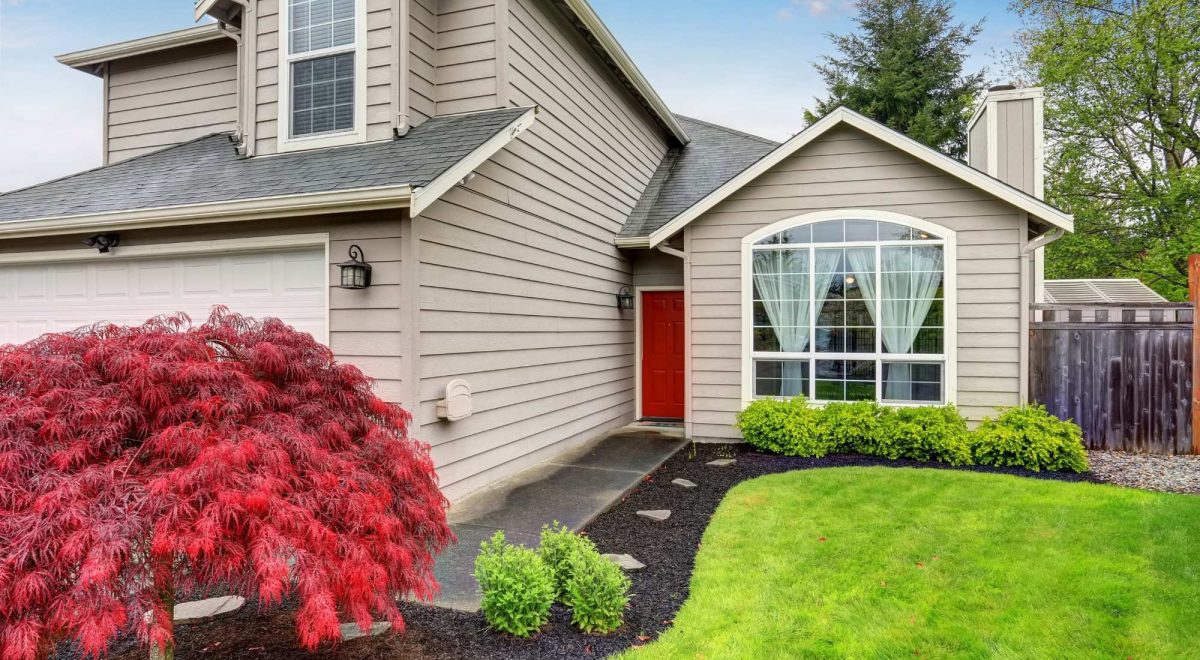How long does it take for outdoor paint to dry? It’s a question that is often difficult to find a reliable answer for.
Knowing how long to let paint dry or how many days of sunlight you need is vital.
This guide will tell you all you need to know about dry times for exterior paints.
Read on to find out what types of paint dry faster and how long you need to let your freshly painted home dry.
Table of Contents
- Exterior Paint: Dry vs. Cured
- How Long Does it Take for Exterior Paint to Dry? It Depends on the Type of Paint
- How Fast Does Exterior Paint Dry? 5 Factors That Can Affect Your Dry Time
- How Long Should Exterior Paint Dry Before a Second Coat?
- How Long Does Exterior Paint Need to Dry Before Rain?
- Rely on A1 Paint Removal, Painting & Restoration for Your Exterior Paint Project

Exterior Paint: Dry vs. Cured
You know that you need to allow exterior paint time to dry.
But did you know that there is a step beyond drying?
If you have ever heard someone say paint has to cure, you might have wondered what they meant by that.
Paint is considered dry when it is no longer sticky to the touch.
Paint is considered cured after most all of the solvents have evaporated — leaving a durable, hardened surface that won’t easily succumb to wear and tear.
Paint takes mere hours to dry but days upon days to cure. For many paints, it can take up to 30.
How Long Does It Take for Exterior Paint to Dry? It Depends on the Type of Paint
While it would be nice if there was such a thing as a standard dry time, every paint dries differently and no two projects are alike.
Some types of paint dry relatively fast while others take quite a while.
Latex Based Paint
The popular option, latex paint, is famous for its quick dry time. While varying conditions (like temperature and humidity) can play a part, latex paint usually dries within 1 to 3 hours.
Additional coats can often be added somewhere between 3 to 5 hours after the previous coat is finished.
While latex paint has a great dry time, its stellar performance drops when it comes to curing time. Latex paint dries from the outside in — meaning the curing process takes much longer than paint that dries from the inside out.
Curing latex paint takes a minimum of 14 days, but with poor conditions, this can take up to 30 days.
Oil-Based Paint
Once upon a time, oil-based paint was the favorite option. Over time, its popularity has dropped dramatically and its dry time seems to be the culprit.
Oil paint takes somewhere between 6 and 8 hours — just to be dry to the touch.
This makes it difficult to do more than one coat per day and can make a project that could have only taken a day take three instead.
Oil paint is not all bad, however. When it comes to curing, oil paint gets its time in the spotlight. With a cure time of only about 3 to 7 days, this option is much, much faster than its competitors.
Oil paints cure time makes it a popular choice for floors and trim.
How Fast Does Exterior Paint Dry? 5 Factors That Can Affect Your Dry Time
So, exactly how long does outdoor paint take to dry?
Once again, there is no solid answer that fits every situation.
Multiple factors can affect your paint dry time and you often cannot control these factors.
But never fear, although navigating the world of paint-drying-factors can be a difficult task, here at A1 Paint Removal, Painting, and Restoration, we know all about exterior painting and what affects an exterior job’s dry time.
We have compiled a list of the top 5 factors that affect your paint’s dry time — beginning with temperature.
#1: Temperature
Temperature matters, and not just when you are deciding if it’s still too hot to break out your new fall jacket.
If the temps outside are not within the right range, paint will not dry well.
Below 50 degrees, and you’ll find that your paint takes far too long to dry, and when it finally does, it won’t look like you had hoped.
If you’re painting your porch in the middle of the summer and the thermometer is reading above 85 degrees, you have run into another problem. When it gets too hot, paint often dries too quickly — meaning it doesn’t get enough time to properly bond with the surface.
This often leads to a crackly, flakey, disappointing paint job.
Most paints (and most people) function best when the temperatures are between 50 and 85 degrees. Before rolling on the first coat, always check your paint can or manufacturer’s site to ensure that the temperatures are right for your specific paint.
#2: Humidity
High humidity has claimed quite a few painting project victims.
When you go to paint outside and find that humidity has crossed the 50% line, you had best put the brush down and the paint can away.
Weather with 50% humidity or greater makes it difficult for paint to dry well since the air around it is not able to absorb nearly as much moisture.
Not only does high humidity add time to your project, it can also leave your fresh coat looking anything but lovely.
From drips to streaks, humidity and exterior paint are a dangerous mix.
High humidity has claimed quite a few painting project victims.
When you go to paint outside and find that humidity has crossed the 50% line, you had best put the brush down and the paint can away.
Weather with 50% humidity or greater makes it difficult for paint to dry well since the air around it is not able to absorb nearly as much moisture.
Not only does high humidity add time to your project, it can also leave your fresh coat looking anything but lovely.
From drips to streaks, humidity and exterior paint are a dangerous mix.
#3: Wind
How long does outdoor paint take to dry?
The answer depends on the wind speeds.
While a light breeze can both cool you down and help your paint dry a little faster, strong winds are a completely different story.
High winds make climbing a ladder a rather dangerous feat.
Strong winds also frequently cause ripples in the paint. And if you’re in an area with leaves, dust, or freshly mown grass, you might find yourself with some unexpected — and unwanted — embellishments sticking to your freshly-painted shutters.
If you opted for painting via spray gun, wind poses a whole new threat — you could end up painting everything except your house.
#4: Thickness
From the type of paint you use to your application method, you will find yourself dealing with varying degrees of coat thickness on your project.
Thick paints take longer to dry — and so do thick coats.
Be sure to consider how thick your paint is and how thick your coats will be before you assume it will be dry before that 8 p.m. thunderstorm hits.
#5: Primer
While some paints have the primer mixed directly into them, there are still plenty of options that require a coat or two of primer before you add your paint.
Be sure to follow directions on both your paint and your primer to ensure that you are doing everything you can to make your project as great as possible.
Primer often seems to dry fast — as in 30 to 60 minutes fast.
But primer has to cure some before you can add the next coat. You often need to wait at least 3 hours before adding another coat of primer or pulling out the new color.
How Long Should Exterior Paint Dry Before a Second Coat?
Before you can add a second coat of paint, your first coat has to be fully dry to the touch. This will take longer for some paints but is usually somewhere between 3-10 hours.
It all depends on factors such as:
- Weather
- Wind
- Humidity
- Temperature
Latex Based Paint
When you’re working with latex paints, you should allow the first coat to dry for around 3 to 5 hours before adding the next coat. Latex paint is often dry in about 1-3 hours, but you always want to make sure that the previous coat is fully dried before you add the next one.
Oil-Based Paint
Oil-based paints are famous for taking quite a while to dry. They are usually dry to the touch after a lengthy 6 to 8 hours but you should wait at least 8 to 10 hours before you add a second coat. Many people wait overnight before adding a second coat of oil-based paint.
How Long Does Exterior Paint Need to Dry Before Rain?
When planning out the best time to paint your home’s exterior, you should be conscious of upcoming rainy days. For best results, you should have 5 consecutive, dry, sunny days to allow your paint to fully dry.
Bare minimum …
You need 6 to 24 hours, depending on your paint.
Rely on A1 Paint Removal, Painting & Restoration for Your Exterior Paint Project
Exterior paint is important. It is the first thing people notice about your house and it can help protect your siding from the elements.
Your exterior paint job isn’t something you want to mess around with or do poorly.
Leave the tough stuff to the experts at A1 Paint Removal, Painting & Restoration.
As a family-owned company, we have been around for over 25 years; we have the experience and skill needed to create the home exterior you dream of.
We offer free estimates and we can’t wait to hear about your new project.





